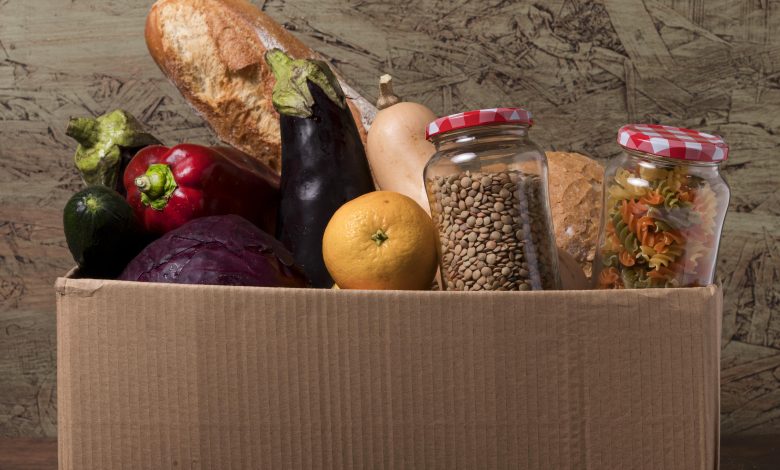
In June 2025, South Africa saw a slight drop in the cost of the average household food basket. While this decrease offers some relief, it remains clear that food costs are still beyond the reach of many low-income households across the country. The latest figures reveal a modest decline in the average food basket price, but when compared to previous years, the cost continues to rise, straining already financially stretched households.
Key Insights from leading industry reports and experts highlight that, despite the small decrease in June, food prices are still a significant issue for South African consumers. The situation is especially challenging for low-income earners who struggle to meet their basic food needs.
A Small Drop in Household Food Basket Costs
The average cost of a basic food basket in South Africa for June 2025 dropped by a mere R23.46 (0.4%) compared to May 2025, settling at R5,443.12. However, when compared to June 2024, the overall cost has increased by 3.6%. This indicates a persistent upward trend in food prices, despite the minor decrease this month.
The cost of food varies significantly across the country. Areas like Johannesburg and Pietermaritzburg experienced an increase in food prices, while cities such as Durban, Cape Town, and Springbok saw slight reductions. These regional fluctuations make it clear that while there may be small pockets of relief, the national situation remains concerning for many South Africans.
The Ongoing Affordability Struggles for Low-Income Households
Even with this small drop in costs, affordability remains out of reach for many, particularly low-income consumers. A closer look at the basic nutritional food basket—a list of essential items required for a healthy, balanced diet for a family of four—reveals that the cost remains prohibitively high. In June 2025, this basket was priced at R3,809.26, far exceeding the income of many low-income families who continue to face food insecurity.
Evashnee Naidoo, from the Black Sash KZN, emphasizes that food insecurity remains a critical issue, particularly for vulnerable communities. “Despite the minor decrease in food basket costs, many households are still struggling to make ends meet,” she says. “People are entering into debt just to buy food and basic essentials. This is a serious concern that requires immediate action from government and businesses alike.”
The stark reality is that a large portion of South Africa’s population remains vulnerable to the effects of high food prices, which continue to surpass wage increases and inflation rates.
ALSO READ: Most Expensive Province for Groceries in South Africa (2025)
Expert Insights on the Broader Economic Impact
Experts warn that the food price inflation trend, even with small fluctuations, underscores the long-term strain on South African consumers. Mervyn Abrahams, director of PMBEJD, notes that the rising cost of living—fuelled by high food prices—continues to erode the purchasing power of households across the country. “As financial and economic conditions worsen, so too does the ability for households to afford nutritious and sufficient food,” Abrahams explains.
The South African government’s efforts, such as VAT exemptions on certain basic food items, have not been enough to fully counterbalance the rising costs. In fact, many essential items, including some zero-rated foods, have seen price increases over the last year, complicating efforts to improve household affordability.
Looking Forward: What Needs to Be Done?
While the minor dip in the cost of food baskets provides a glimmer of hope, it is evident that the country’s economic challenges, including persistent unemployment and rising fuel prices, continue to play a significant role in food affordability. The small decrease in food prices is unlikely to significantly alleviate the struggles faced by low-income South Africans.
The situation calls for comprehensive, long-term solutions that address the root causes of food insecurity and high living costs. Siyanda Baduza, an economist at the Institute for Economic Justice, stresses that “While the decrease in food costs may offer temporary relief, it’s crucial to implement policies that target long-term affordability for low-income households.”
Government intervention in the form of subsidies or stronger social safety nets, alongside private sector efforts to reduce food wastage and improve supply chain efficiency, could go a long way toward addressing this issue.
ALSO READ: New Grocery Store Beats Shoprite, Pick n Pay, and Checkers in Price
A Call for Greater Support for Low-Income Households
The June 2025 food basket cost drop provides a small but welcome relief for South Africans, but the broader challenges around food affordability remain. While some families may see a slight decrease in costs, the issue of high food prices persists, especially for those in lower-income brackets. Experts agree that comprehensive policy changes, alongside a unified approach from both the government and private sector, are needed to alleviate the burden on vulnerable households.
In the meantime, South African households will continue to face significant challenges in affording a nutritious and balanced diet, and without more extensive support, the crisis of food insecurity is likely to worsen.



